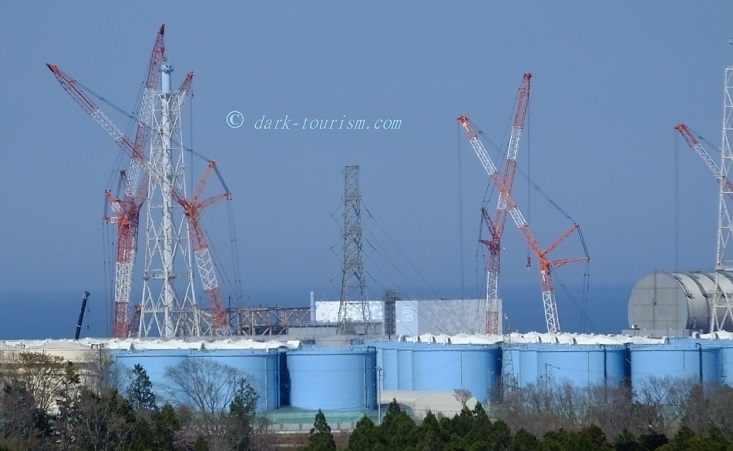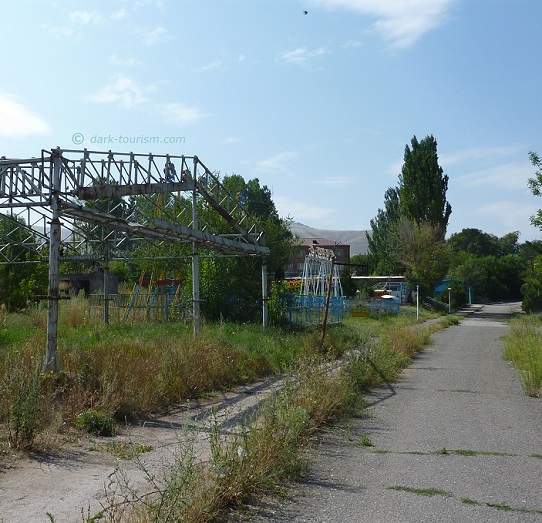Dark Tourism BLOG
This page is intended to provide a more flexible and also more interactive element to dark-tourism.com, which is otherwise more static (more like an encyclopedia). The idea came about after the DT page I used to curate on Facebook was suddenly shut down by the company (full story here). So I’m continuing here – with regular blog posts, either featuring particular dark-tourism destinations or marking specific days in dark history and sometimes reacting to current affairs that are in some way relevant to this site’s topic.
sign up to the newsletter!

Fukushima water
You may have seen some headlines about Fukushima lately, namely about the site of the stricken nuclear power plant (NPP) planning to release a million tonnes of radioactive water into the Pacific Ocean. This is not actually news, as this move has been in the pipeline for a long while, nor is it all that sensational and threatening. Over a year ago there were already similar headlines (about the possibility of such a move coming), and on my ex-Facebook page I posted the following text in reaction to this article:

Sisian – and a new poll
After the previous, rather text-heavy post, this time I picked something more visual, and while the previous post was newly-created original material, this time it is again something from the archives. Just over a year ago I posted a series of photos on my now purged Facebook page that were taken in the little town of Sisian in south-eastern Armenia. This followed one of the quiz questions I used to put up there regularly on Fridays. The photo above came with the question “a fun-less funfair, abandoned, overgrown and slowly rusting away … Where is this?”. I had half expected that

Escape from Sobibor
On this day, 77 years ago, on 14 October 1943, a revolt at the death camp of Sobibor led to the escape of hundreds of Jewish prisoners from this infamous and sinister place, of whom 50 to 60 individuals managed to survive and tell the story of this camp after WWII, especially Thomas Blatt (see also LAMOTH) and Alexander ‘Sasha’ Pechersky, the Soviet Red Army POW who led the revolt/escape.
The story is on record in various places where more of the details can be found. Here only the briefest of summaries has to suffice.
Of crucial importance is to note first of all the significant difference between a concentration camp and the three dedicated death camps that were purpose-built for the so-called ‘Operation Reinhard’. That was the

Vajont
On this Day, 57 years ago, on 9 October 1963, the Vajont Dam disaster in northern Italy killed some 2000 people.
It was part natural disaster and part man-made. The hydroelectric dam as such was an engineering marvel (at 262 metres the highest in the world at the time, and still in the top ten), BUT: the mountainside to the south of the reservoir that formed in front of the dam when it was completed turned out to be unstable. This geological fragility had been recognized and warnings were voiced – but the relevant government officials preferred to ignore all this.
And so the

A Former Republic’s Ex-National Day
On this day, 7 October, the former GDR (in the West aka ‘East Germany’) used to celebrate the anniversaries of its founding on that date in 1949. It managed to get to its 40th anniversary in 1989 – but that was at a time when severe cracks in the state’s regime were already more than apparent. A few weeks later the Berlin Wall fell and just days before it would have been the 41st anniversary of the GDR’s founding, the state had ceased to exist on 3 October 1990 (see this recent post).
I used to mark this day, “Tag der Republik” in GDR parlance (literally ‘day of the republic’), on my former

Dark Tourism & Cars
As decided in the latest poll, the theme of this post is ‘dark tourism and cars’. It won by two votes ahead of ‘dark tourism and clothes’, so that will be entered again in the next poll. And since several people said that their second choice (and close contender) was ‘dark tourism and spheres’ I’ll give that another chance next time too. NPPs will have to wait a little longer, but as that is one of my personal favourites it is bound to pop up at some point as well (whether in another poll or independently I can’t say yet).
But now to cars. Searching through my archives I found
